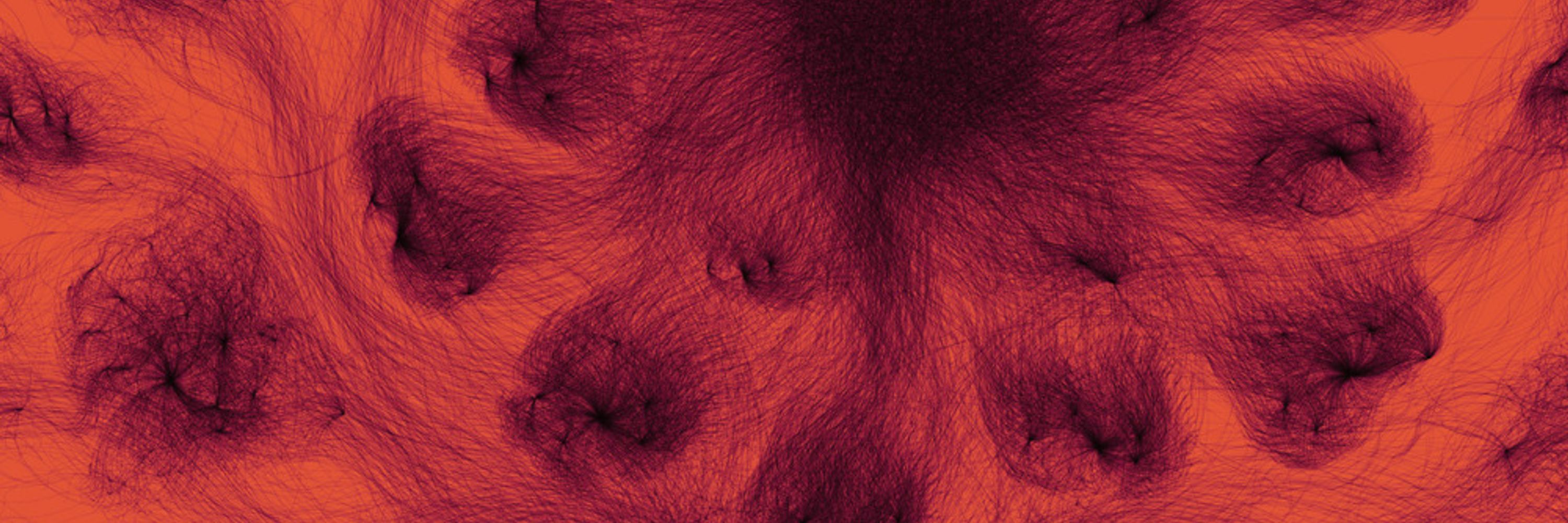
Sean Gibbons 🦠💩
@gibbological.bsky.social
microbiome researcher | associate professor @isbscience.org | affiliate prof @uwbioe.bsky.social | ecology, evolution, and systems biology of 💩 🦠 | precision/personalized nutrition/medicine ⚕️ | 🏳️🌈 he/him | lab website: gibbons.isbscience.org
Happy Halloween 🎃

November 2, 2025 at 9:10 PM
Happy Halloween 🎃
Glad I attended Lee Hood’s lab retreat this year.
Great weather and even better science! 🧬 ⛰️
Great weather and even better science! 🧬 ⛰️




October 11, 2025 at 5:48 PM
Glad I attended Lee Hood’s lab retreat this year.
Great weather and even better science! 🧬 ⛰️
Great weather and even better science! 🧬 ⛰️
Rubbing shoulders with a @nobelprize.bsky.social laureate! 🤩What a week!
Couldn’t have happened to a nicer person: isbscience.org/news/press-r...
@isbscience.org @naehasubramanian.bsky.social @flash-point.bsky.social @annabiosys.bsky.social
Couldn’t have happened to a nicer person: isbscience.org/news/press-r...
@isbscience.org @naehasubramanian.bsky.social @flash-point.bsky.social @annabiosys.bsky.social

October 8, 2025 at 12:19 AM
Rubbing shoulders with a @nobelprize.bsky.social laureate! 🤩What a week!
Couldn’t have happened to a nicer person: isbscience.org/news/press-r...
@isbscience.org @naehasubramanian.bsky.social @flash-point.bsky.social @annabiosys.bsky.social
Couldn’t have happened to a nicer person: isbscience.org/news/press-r...
@isbscience.org @naehasubramanian.bsky.social @flash-point.bsky.social @annabiosys.bsky.social
Another perk of this conference: getting to hang with Julia Cui! 🤩

September 11, 2025 at 2:25 PM
Another perk of this conference: getting to hang with Julia Cui! 🤩
Super fun conference so far! Learned a lot from other speakers, and great audience engagement!

September 9, 2025 at 9:41 PM
Super fun conference so far! Learned a lot from other speakers, and great audience engagement!
Just saw this cool preprint from @contaminatedsci.bsky.social's lab that used the bacterial-to-host (B:H) read ratio (doi.org/10.1128/msys...) to quantify absolute bacterial biomass in skin swab samples: www.biorxiv.org/content/10.1...
Worked well in high, but not so well in low biomass settings.
Worked well in high, but not so well in low biomass settings.

August 11, 2025 at 3:00 PM
Just saw this cool preprint from @contaminatedsci.bsky.social's lab that used the bacterial-to-host (B:H) read ratio (doi.org/10.1128/msys...) to quantify absolute bacterial biomass in skin swab samples: www.biorxiv.org/content/10.1...
Worked well in high, but not so well in low biomass settings.
Worked well in high, but not so well in low biomass settings.
Using this information, Alex formulated three novel model-designed probiotics: P. vulgatus alone, a subset of three +/- clostridial taxa from VE303, and a combination of P. vulgatus and these 3 clostridial taxa.
Each combination was effective -- P. vultagus did quite well on its own.
Each combination was effective -- P. vultagus did quite well on its own.


August 6, 2025 at 4:51 PM
Using this information, Alex formulated three novel model-designed probiotics: P. vulgatus alone, a subset of three +/- clostridial taxa from VE303, and a combination of P. vulgatus and these 3 clostridial taxa.
Each combination was effective -- P. vultagus did quite well on its own.
Each combination was effective -- P. vultagus did quite well on its own.
Alex looked at the correlations between predicted commensal growth rates & relative abundances vs. predicted C. diff growth for several putative probiotic candidates.
We found three groups: +/+ correlation, +/- correlation, and -/- correlation (for commensal growth/abundance, respectively).
We found three groups: +/+ correlation, +/- correlation, and -/- correlation (for commensal growth/abundance, respectively).

August 6, 2025 at 4:51 PM
Alex looked at the correlations between predicted commensal growth rates & relative abundances vs. predicted C. diff growth for several putative probiotic candidates.
We found three groups: +/+ correlation, +/- correlation, and -/- correlation (for commensal growth/abundance, respectively).
We found three groups: +/+ correlation, +/- correlation, and -/- correlation (for commensal growth/abundance, respectively).
Alex looked at metabolic competition between C. diff and other commensal taxa in C. diff's high- and no/low-growth niches.
He found that dominant Gram negative anaerobes, like Bacteroides and Phocaeicola species, showed strong competition with C. diff when they were abundant.
He found that dominant Gram negative anaerobes, like Bacteroides and Phocaeicola species, showed strong competition with C. diff when they were abundant.

August 6, 2025 at 4:51 PM
Alex looked at metabolic competition between C. diff and other commensal taxa in C. diff's high- and no/low-growth niches.
He found that dominant Gram negative anaerobes, like Bacteroides and Phocaeicola species, showed strong competition with C. diff when they were abundant.
He found that dominant Gram negative anaerobes, like Bacteroides and Phocaeicola species, showed strong competition with C. diff when they were abundant.
We were able to map 6 of the 8 VE303 strains to AGORA1 metabolic reconstructions, so we tested this truncated 6-strain probiotic across our models.
We found that, combined with vancomycin treatment, this cocktail was able to suppress model-predicted C. diff growth through metabolic competition.
We found that, combined with vancomycin treatment, this cocktail was able to suppress model-predicted C. diff growth through metabolic competition.

August 6, 2025 at 4:51 PM
We were able to map 6 of the 8 VE303 strains to AGORA1 metabolic reconstructions, so we tested this truncated 6-strain probiotic across our models.
We found that, combined with vancomycin treatment, this cocktail was able to suppress model-predicted C. diff growth through metabolic competition.
We found that, combined with vancomycin treatment, this cocktail was able to suppress model-predicted C. diff growth through metabolic competition.
We found that low gut alpha-diversity was associated with higher predicted C. diff growth rates.
However, the relationship was non-linear, with very high alpha-diversity showing higher predicted C. diff colonization risk.
This suggests a Goldilocks Zone for alpha-diversity & colonization risk.
However, the relationship was non-linear, with very high alpha-diversity showing higher predicted C. diff colonization risk.
This suggests a Goldilocks Zone for alpha-diversity & colonization risk.

August 6, 2025 at 4:51 PM
We found that low gut alpha-diversity was associated with higher predicted C. diff growth rates.
However, the relationship was non-linear, with very high alpha-diversity showing higher predicted C. diff colonization risk.
This suggests a Goldilocks Zone for alpha-diversity & colonization risk.
However, the relationship was non-linear, with very high alpha-diversity showing higher predicted C. diff colonization risk.
This suggests a Goldilocks Zone for alpha-diversity & colonization risk.
C. diff's commensal growth niches were quite spread out, when comparing them against the growth niches of other dominant gut commensals (e.g., in a UMAP, where the vector of import fluxes for each species [their 'diet'] is collapsed into 2 dimensions).

August 6, 2025 at 4:51 PM
C. diff's commensal growth niches were quite spread out, when comparing them against the growth niches of other dominant gut commensals (e.g., in a UMAP, where the vector of import fluxes for each species [their 'diet'] is collapsed into 2 dimensions).
These C. diff commensal growth niches were highly conserved across independent human cohorts with thousands of samples.
Similar to what we saw before, a little more than half of the population was susceptible & the rest were resistant to C. diff commensal colonization.
Similar to what we saw before, a little more than half of the population was susceptible & the rest were resistant to C. diff commensal colonization.

August 6, 2025 at 4:51 PM
These C. diff commensal growth niches were highly conserved across independent human cohorts with thousands of samples.
Similar to what we saw before, a little more than half of the population was susceptible & the rest were resistant to C. diff commensal colonization.
Similar to what we saw before, a little more than half of the population was susceptible & the rest were resistant to C. diff commensal colonization.
The validation data gave us confidence that mechanistic interpretation of our models could provide insight into C. diff's commensal niche(s).
We found three distinct niches (similar across 16S and metagenomic data sets): high-, moderate-, and no/low-growth.
We found three distinct niches (similar across 16S and metagenomic data sets): high-, moderate-, and no/low-growth.

August 6, 2025 at 4:51 PM
The validation data gave us confidence that mechanistic interpretation of our models could provide insight into C. diff's commensal niche(s).
We found three distinct niches (similar across 16S and metagenomic data sets): high-, moderate-, and no/low-growth.
We found three distinct niches (similar across 16S and metagenomic data sets): high-, moderate-, and no/low-growth.
Next, we used fecal samples collected before and after FMT in patients with recurrent C. diff infections.
As expected, model-predicted C. diff growth was higher before FMT.
Around half of healthy people were susceptible.
Models constructed with 16S and metagenomic data showed similar results.
As expected, model-predicted C. diff growth was higher before FMT.
Around half of healthy people were susceptible.
Models constructed with 16S and metagenomic data showed similar results.

August 6, 2025 at 4:51 PM
Next, we used fecal samples collected before and after FMT in patients with recurrent C. diff infections.
As expected, model-predicted C. diff growth was higher before FMT.
Around half of healthy people were susceptible.
Models constructed with 16S and metagenomic data showed similar results.
As expected, model-predicted C. diff growth was higher before FMT.
Around half of healthy people were susceptible.
Models constructed with 16S and metagenomic data showed similar results.
Next, we looked for in vivo validation data -- I remembered a gut microbiome time series with a food poisoning event on day ~150 (pubmed.ncbi.nlm.nih.gov/24336217/), which was followed by C. diff colonization.
Model predictions showed strong agreement with measured C. diff abundance over time -- 🎉
Model predictions showed strong agreement with measured C. diff abundance over time -- 🎉

August 6, 2025 at 4:51 PM
Next, we looked for in vivo validation data -- I remembered a gut microbiome time series with a food poisoning event on day ~150 (pubmed.ncbi.nlm.nih.gov/24336217/), which was followed by C. diff colonization.
Model predictions showed strong agreement with measured C. diff abundance over time -- 🎉
Model predictions showed strong agreement with measured C. diff abundance over time -- 🎉
To validate our predictions, we first used data from in vitro communities of commensal gut bacteria invaded by C. diff, from the Venturelli Lab (pmc.ncbi.nlm.nih.gov/articles/PMC...).
Our models matched the empirical results, accurately predicting C. diff biomass across these toy communities.
Our models matched the empirical results, accurately predicting C. diff biomass across these toy communities.

August 6, 2025 at 4:51 PM
To validate our predictions, we first used data from in vitro communities of commensal gut bacteria invaded by C. diff, from the Venturelli Lab (pmc.ncbi.nlm.nih.gov/articles/PMC...).
Our models matched the empirical results, accurately predicting C. diff biomass across these toy communities.
Our models matched the empirical results, accurately predicting C. diff biomass across these toy communities.
For his dissertation, Alex investigated whether or not our community-scale metabolic modeling tools (journals.asm.org/doi/10.1128/...) could be used to better understand C. diff colonization risk in the gut.
He developed an 'in silico invasion assay', which is depicted in the graphical abstract ⬇️
He developed an 'in silico invasion assay', which is depicted in the graphical abstract ⬇️

August 6, 2025 at 4:51 PM
For his dissertation, Alex investigated whether or not our community-scale metabolic modeling tools (journals.asm.org/doi/10.1128/...) could be used to better understand C. diff colonization risk in the gut.
He developed an 'in silico invasion assay', which is depicted in the graphical abstract ⬇️
He developed an 'in silico invasion assay', which is depicted in the graphical abstract ⬇️
Lab picnic in Cal Anderson Park this week.
Peak Seattle summer 🌞
Peak Seattle summer 🌞

August 2, 2025 at 4:32 AM
Lab picnic in Cal Anderson Park this week.
Peak Seattle summer 🌞
Peak Seattle summer 🌞
As a final validation of our approach, we found that both B:H and B:D ratios showed a ~45-fold drop in total bacterial biomass in the guts of healthy individuals treated with broad-spectrum antibiotics (relative to their baseline). A 400-fold drop was observed in antibiotic-treated mice.

July 31, 2025 at 3:33 PM
As a final validation of our approach, we found that both B:H and B:D ratios showed a ~45-fold drop in total bacterial biomass in the guts of healthy individuals treated with broad-spectrum antibiotics (relative to their baseline). A 400-fold drop was observed in antibiotic-treated mice.
As expected, we saw lower B:H ratios (lower bacterial biomass) in Inflammatory Bowel Disease patients, relative to non-IBD controls.
Fecal bacterial biomass was lower in Ulcerative Colitis (UC) patients than Crohn's Disease patients (iHMP2 data set).
Fecal bacterial biomass was lower in Ulcerative Colitis (UC) patients than Crohn's Disease patients (iHMP2 data set).

July 31, 2025 at 3:33 PM
As expected, we saw lower B:H ratios (lower bacterial biomass) in Inflammatory Bowel Disease patients, relative to non-IBD controls.
Fecal bacterial biomass was lower in Ulcerative Colitis (UC) patients than Crohn's Disease patients (iHMP2 data set).
Fecal bacterial biomass was lower in Ulcerative Colitis (UC) patients than Crohn's Disease patients (iHMP2 data set).
Across healthy individuals, we see no more than a 2-3 fold variation in B:H ratios between individuals (on average).
B:H ratios show longitudinal variation in healthy individuals, and maintain a stable mean within an individual.
B:H ratios show longitudinal variation in healthy individuals, and maintain a stable mean within an individual.

July 31, 2025 at 3:33 PM
Across healthy individuals, we see no more than a 2-3 fold variation in B:H ratios between individuals (on average).
B:H ratios show longitudinal variation in healthy individuals, and maintain a stable mean within an individual.
B:H ratios show longitudinal variation in healthy individuals, and maintain a stable mean within an individual.
In both mouse & human data sets, B:H ratios aligned with qPCR data and diet-derived read normalization.
Additionally, we found data from a milk microbiome study, where they used a spike-in to estimate total bacterial biomass. Spike-in and B:H biomass estimates showed almost perfect agreement
Additionally, we found data from a milk microbiome study, where they used a spike-in to estimate total bacterial biomass. Spike-in and B:H biomass estimates showed almost perfect agreement

July 31, 2025 at 3:33 PM
In both mouse & human data sets, B:H ratios aligned with qPCR data and diet-derived read normalization.
Additionally, we found data from a milk microbiome study, where they used a spike-in to estimate total bacterial biomass. Spike-in and B:H biomass estimates showed almost perfect agreement
Additionally, we found data from a milk microbiome study, where they used a spike-in to estimate total bacterial biomass. Spike-in and B:H biomass estimates showed almost perfect agreement




